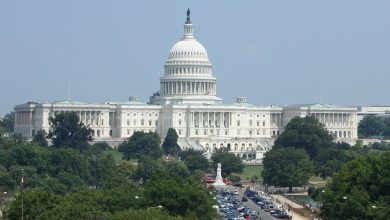A Surging National Debt Is Bullish for Gold

The debt ceiling drama ended with fake budget cuts and a shiny new credit card with no limit for the federal government. We can now expect a big surge in the national debt as the US government plays catch up after nearly six months up against its borrowing limit.
So, how might this impact the price of gold?
If history is any indication, it will likely drive it higher.
The first business day after the debt ceiling deal went into effect, the US Treasury increased the national debt by over $350 billion. By June 8, the debt had increased by just over $454 billion to $31.9 trillion.
And you can expect more eye-popping single-day national debt increases in the days ahead. In fact, it won’t surprise me if the national debt eclipses $32 trillion this week. Not only does the Treasury have to borrow to replenish its checking account (called the Treasury General Account or TGA at the New York Federal Reserve Bank), but it will also have to borrow to cover the budget deficits the Biden administration runs month after month.
And despite what Republicans tell you, spending is set to go up the next two years, even if Congress sticks to this deal. The US government is blowing through nearly half a trillion dollars every month and the deficit for fiscal 2023 was already close to $1 trillion with five months to go. The spending with its accompanying deficits isn’t ending in the foreseeable future.
What’s This Mean for Gold?
Typically, big spikes in the national debt correspond with a rising gold price.
Elements by Visual Capitalist put together a graphic showing how the price of gold typically tracks with big debt increases.
As you can see, the price of gold has generally trended upward along with the national debt. Of course, there are other factors that impact the price of gold, but the general trend is worth noting.
This correlation makes sense for a couple of reasons.
In the first place, a rising national debt creates economic uncertainty and that drives safe haven buying.
Even though the mainstream doesn’t talk much about the national debt, at some level, most people recognize that the trajectory is unsustainable. The longer the debt climbs and the political class kicks the can down the road, the shorter the road gets.
In the second place, a surging national debt will ultimately mean more inflation.
At some point, this unlimited borrowing is going to force the Federal Reserve to monetize some of this debt. That will require a return to quantitative easing.
Even if it doesn’t happen immediately, QE is in the future. There is no other way for the market to absorb all of the debt the Treasury will have to issue to support spending that will mostly go onto a credit card with no limits.
In order to prop up the bond market and keep prices higher than they otherwise would be (and interest rates lower), the Fed will ultimately have to buy bonds to boost demand. It will buy those Treasuries with money created out of thin air.
With this in mind, it makes sense that people would turn to gold as an inflation hedge.
Here is some raw data to go along with the chart.
At under $2,000 an ounce, gold has plenty of room to run up. And one thing is for certain — the debt problem isn’t going away.
Call 1-888-GOLD-160 and speak with a Precious Metals Specialist today!
Buka akaun dagangan patuh syariah anda di Weltrade.
Source link







